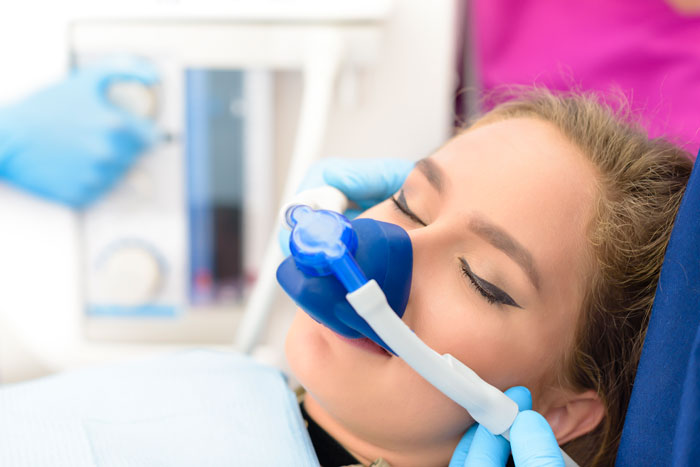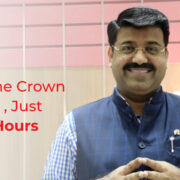The fear and anxiety of going to the dentist are feelings that many people have experienced. Pain-free dental care has been a long-time dream for many who dread even the thought of sitting in the dental chair. Fortunately, advancements in dental technology have made it possible for dentists to use anaesthetic to numb both sides of your mouth quickly and effectively. This makes dental care more comfortable and less intimidating. With anaesthetic, dentists can provide pain-free dental care while still providing the same quality of service. So, can a dentist numb both sides of your mouth? The answer is yes! With the right dentist, you can receive the treatment you need without fear of discomfort.
What is Pain-Free Dental Care?
Pain-free dental care is a growing trend in the dental industry. It is a type of dental care that focuses on making the experience as comfortable as possible for patients. This includes the use of anaesthetics to numb the mouth and gums during the procedure. This ensures that the patient does not feel any pain or discomfort during the dental visit. Pain-free dental care also includes other measures taken to make the patient feel at ease and comfortable, such as providing a relaxing environment, using calming music and aromatherapy, and providing a friendly, attentive staff.
The main goal of pain-free dental care is to ensure that the patient receives the highest quality of care without having to endure any pain or discomfort. Pain-free dental care is becoming increasingly popular as more dentists recognize the importance of providing a comfortable, safe environment for their patients.
How does anaesthesia work for pain-free dental care?
Anaesthetic is a medication used to numb the area of the mouth that is being treated. It works by blocking the nerves that carry pain signals to the brain. This numbing effect will last for a few hours after the procedure is complete. Anaesthetics can be administered in several different forms, including injections, topical creams, and oral rinses.


Injections are the most common form of anaesthetic used in dentistry. It is administered directly into the gums, where it takes effect almost immediately. This is the most effective method for numbing the mouth, as it provides a fast-acting, long-lasting effect. Topical creams are another form of anaesthetic, which are applied directly to the gums and allowed to take effect over a few minutes. Oral rinses are also available, which are swished around in the mouth and then spit out. These are most effective when used in combination with other forms of anaesthetic.
Benefits of Pain-Free Dental Care
Reduced Anxiety: Many people are afraid of going to the dentist because of the pain associated with certain procedures. Pain-free dental care reduces anxiety and makes the experience much more comfortable.
Improved Oral Health: Pain-free dental care encourages people to seek out dental treatment more regularly. This can lead to better oral health, as problems are detected and addressed before they become more serious.
Better Overall Health: Poor oral health can lead to other health problems, such as heart disease and diabetes. By promoting pain-free dental care, people are more likely to maintain good oral health, which can lead to better overall health.
Increased Comfort: Pain-free dental care is more comfortable than traditional methods, which can be painful and uncomfortable. This can lead to a better overall experience and make people more likely to return for follow-up appointments.
Improved Patient Compliance: When patients are comfortable during dental procedures, they are more likely to follow through with treatment plans and recommendations from their dentist. This can lead to better outcomes and improved oral health.
Can a Dentist Numb Both Sides of Your Mouth?
Yes, a dentist can numb both sides of your mouth. This is done using an anaesthetic, which is administered directly into the gums. This ensures that the entire mouth is numb and that the patient does not feel any pain or discomfort during the procedure. Depending on the type of procedure being performed, the anaesthetic may be administered in one or multiple injections.
The amount of anaesthetic used will depend on the size of the area being treated. It is important to note that anaesthetic can only be used in certain areas of the mouth. For example, it cannot be used on the tongue, as it is too sensitive. However, a dentist can numb both sides of your mouth with anaesthetic injections.
Pain-free dental care offers several benefits to patients
Reduced Anxiety: Pain-free dental care can help patients who experience anxiety or fear when visiting the dentist. By reducing or eliminating pain during dental procedures, patients may feel more relaxed and comfortable during their visit.
Improved Comfort: Pain-free dental care techniques and technologies can improve patient comfort during procedures. This can make the experience more tolerable and may even reduce the need for pain medication after the procedure.
Faster Recovery: Pain-free dental care can lead to faster recovery times for patients. By reducing trauma to the gums and surrounding tissues during procedures, patients may experience less swelling, bleeding, and discomfort after the procedure.
Better Oral Health Outcomes: Pain-free dental care can help patients receive necessary dental treatments without avoiding the dentist due to fear of pain. This can lead to better oral health outcomes, including reduced risk of cavities, gum disease, and other dental problems.
Improved Overall Health: Good oral health is linked to better overall health, and pain-free dental care can help patients receive necessary treatments to maintain good oral health. This can help reduce the risk of systemic health problems such as heart disease, stroke, and diabetes.
Types of Pain-free Dental Care in India
Sedation Dentistry: This involves the use of medications to help patients relax and feel more comfortable during dental procedures. Sedation dentistry can be administered in various forms, such as oral medication, nitrous oxide gas, or intravenous (IV) sedation.
Laser Dentistry: Laser technology can be used to perform many dental procedures with minimal or no pain. Laser dentistry is often used for procedures such as cavity removal, gum disease treatment, and teeth whitening.


Air Abrasion: Air abrasion is a pain-free alternative to traditional drilling that uses a fine stream of particles to remove decayed material from teeth.
Anesthesia: Dentists may also use local anesthesia to numb the area around a tooth or the entire mouth during certain procedures, such as root canals or extractions.
Virtual Reality: Some dental clinics in India are using virtual reality technology to distract patients during dental procedures and reduce anxiety.
These pain-free dental care options can help patients in India feel more comfortable and relaxed during dental procedures, which can lead to better oral health outcomes. It’s important to discuss pain management options with your dentist before undergoing any dental procedure to ensure that you receive the most appropriate and effective treatment for your needs.
Finding the right Dentist in India for pain-free care
When looking for a dentist who can provide pain-free dental care, it is important to find one that is experienced and knowledgeable in the use of anaesthetic. It is also important to find a dentist that you are comfortable with, as this will help reduce any feelings of anxiety or fear. The best way to find a reputable dentist is to ask for recommendations from family and friends. You can also research local dentists online and read reviews from previous patients.
Preparing for Your Pain-free Dental Appointment
It is important to prepare for your appointment before you go. This includes making sure that you have all of the necessary paperwork and documents, such as insurance information and any forms that need to be filled out. Additionally, it is important to arrive at the appointment on time and to be well-rested. This will help to ensure that you are in the best mental and physical state to receive the treatment?
Conclusion
Pain-free dental care is a growing trend in the dental industry that is becoming increasingly popular. With the use of anaesthetic, dentists can provide pain-free dental care while still providing the same quality of service. Thanks to advancements in dental technology, dentists can now numb both sides of your mouth quickly and effectively. To ensure that you receive the highest quality of care.
It is important to find a reputable dentist that you are comfortable with. With the right dentist and the right preparation, you can receive the treatment you need without fear of discomfort.






